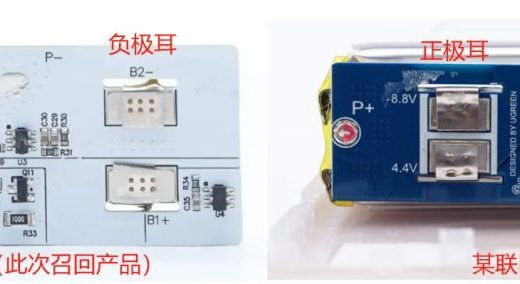Why do smart people check negative reviews first when shopping? How should entrepreneurs respond?
Understanding the problem: Consumer psychology behind negative reviews and challenges for entrepreneurs
In today’s e – commerce era, consumers often browse negative reviews of products first rather than positive ones when shopping. This seemingly abnormal phenomenon actually reflects consumers’ strong demand for real information and their psychology of risk aversion. Negative reviews can help consumers understand the potential problems of products more comprehensively, thus enabling them to make wiser purchasing decisions.
For entrepreneurs, negative reviews are both a challenge and an opportunity. On the one hand, negative reviews may affect product sales and brand image; on the other hand, they also provide valuable feedback for entrepreneurs to improve products and services. How to deal with negative reviews and turn them into tools to enhance competitiveness is a question that entrepreneurs need to think deeply about.
Solution: Strategies for entrepreneurs to deal with negative reviews
1. Face negative reviews squarely and understand consumers’ core demands
Negative reviews usually reflect consumers’ real experiences and dissatisfaction with products. Entrepreneurs need to extract consumers’ core demands from negative reviews rather than simply regarding them as negative information. For example:
– Product quality issues: If negative reviews focus on the durability or functionality of products, it indicates that there may be defects in the product design or production process.
– Service experience issues: If negative reviews mention slow customer service response or logistics problems, it means that the company’s service process needs to be optimized.
2. Respond quickly and show the sincerity to solve problems
After giving negative reviews, consumers often expect to receive responses and solutions from the company. Entrepreneurs should:
– Reply in a timely manner: Respond within 24 hours after the negative review appears to show the company’s attention to consumers’ opinions.
– Personalized communication: Avoid using templated responses and provide personalized solutions for specific problems.
– Be open and transparent: Explain the reasons for the problems and the solutions in the response so that other consumers can see the company’s sense of responsibility.
3. Turn negative reviews into motivation for improvement
Negative reviews are important basis for product and service improvement. Entrepreneurs can use negative reviews in the following ways:
– Data analysis: Regularly analyze the content of negative reviews, identify high – frequency problems and formulate improvement plans.
– Iterate products: Optimize product design or functions according to negative review feedback to enhance the user experience.
– Train the team: For service – related negative reviews, strengthen employee training to improve service quality.
4. Encourage genuine reviews to balance the impact of negative reviews
Entrepreneurs can encourage consumers to leave genuine reviews in the following ways to balance the impact of negative reviews:
– Actively invite reviews: After consumers make a purchase, invite them to share their usage experience via email or text message.
– Provide incentives: Offer small gifts or coupons to consumers who leave reviews, but avoid directly asking for positive reviews.
– Show improvement results: Display the improvements made based on negative reviews on the product page or social media to enhance consumers’ trust.
Case supplement: How Xiaomi deals with negative reviews
Xiaomi is a company centered around user feedback. Its success is inseparable from its attention to and rapid response to negative reviews. Here is a classic case of Xiaomi:
Case background
When Xiaomi launched the MIUI operating system in the early days, users could directly feedback their usage experiences through the forum. Many users would put forward criticisms and suggestions, and even directly point out the system’s defects.
Response strategies
- Establish a rapid response mechanism: Xiaomi set up a dedicated team to collect and sort out user feedback and respond within 24 hours.
- Update the system weekly: Based on user feedback, Xiaomi releases a system update every week to fix known problems and optimize functions.
- Make the improvement process public: Xiaomi makes users’ negative reviews and improvement measures public on the forum so that users can see the company’s efforts.
Results
In this way, Xiaomi not only won users’ trust but also cultivated a group of loyal “Mi fans”. The reputation of the MIUI system has been rapidly improved, becoming one of the core competitiveness of Xiaomi phones.
Summary
Negative reviews are real feedback from consumers on products and services. Entrepreneurs should not avoid them but regard them as opportunities for improvement and growth. By facing negative reviews squarely, responding quickly, continuously improving and encouraging genuine reviews, entrepreneurs can turn negative reviews into tools to enhance brand competitiveness. As shown in the Xiaomi case, properly handling negative reviews can not only solve problems but also win long – term trust and support from consumers.
Read More 查看本文中文版
- Startup Commentary”Building LLMs: The Knowledge Graph Foundation Every AI Project Needs”
- Startup Commentary”The 17th Year of Tmall Double 11 and the New Map Rewritten by AI”
- Startup Commentary”How to Prepare Your Data for Artificial Intelligence”
- Startup Commentary”Small and Medium-sized Banks: “Cutting the Tail” in Loan Assistance”
- Startup Commentary”The Six AI Giants on Stage: AGI Is No Longer a “Future” Thing”





